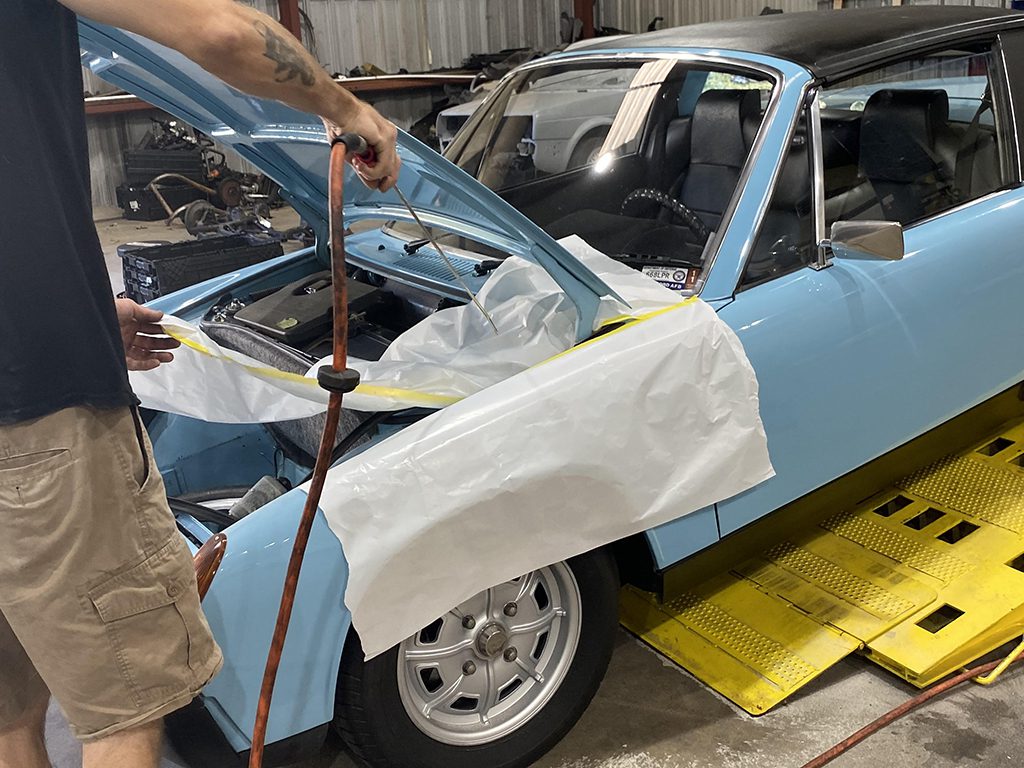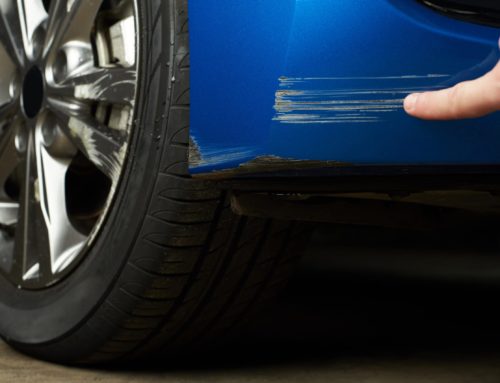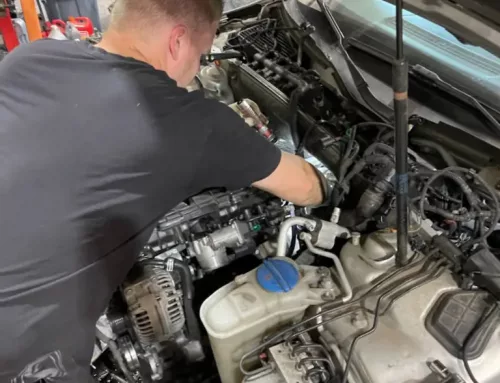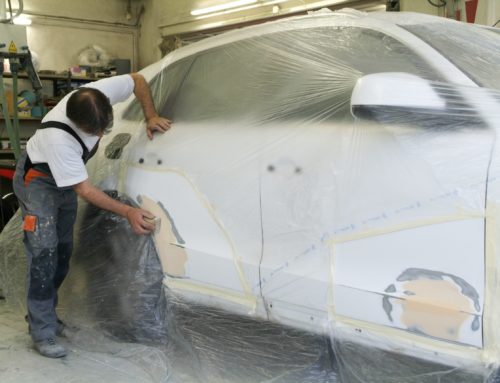If you’re lucky enough to own an older European car, you know that they can be a joy to drive. But if your car needs some restoration, it can be a daunting task. Here are some tips to help you get started on restoring your old car.
- Start with a plan: Decide what parts of the car you want to restore and in what order. This will help you stay organized and focused as you work on the project.
- Gather materials and tools: Make sure you have all the materials and tools you need before you start working. This will save you time and frustration later on.
- Take your time: Don’t rush the process. Enjoy taking your time and doing a thorough job.
- Get help if needed: Don’t be afraid to ask for help from us at Everything Euro if you need it. Restoring an old car can be a fun and rewarding project. With a little planning and patience, you can bring your car back to its former glory.
Rust: The Enemy of Old Cars
Rust is the enemy of old cars. It’s an oxidized metal that appears as a reddish-brown or orange-brown flaky coating on iron or steel. Rust forms when the metal is exposed to oxygen and moisture, such as water or humidity. The chemical reaction between the metal and the oxygen creates iron oxide, which flakes off the surface of the metal. Rust not only damages the appearance of a car, but it can also weaken the structure of the metal, making it more susceptible to breakage. In extreme cases, rust can eat through the metal completely. When left unaddressed, rust can cause a car to fall apart. That’s why it’s important to regularly inspect your car for rust and take steps to remove it before it does serious damage. Fortunately, there are many products on the market that can help remove rust and protect your car from its damaging effects.
Dents, Dings and Scratches: Dealing with Body Damage
The most important thing to remember when restoring body damage on old European cars is to take your time. Rushing the process will only result in sloppy work and an overall poorer finish. It’s also important to have patience when dealing with older cars; they often require more care and attention than newer models.
When it comes to tools, you’ll need a few basics: a good set of screwdrivers, a saw for cutting metal, and a sander for smoothing rough edges. You’ll also need access to a welder if the damage is severe enough that it requires welding. If you’re not experienced in welding, it’s best to leave this task to us at Everything Euro.
In terms of materials, you’ll need sheet metal to patch up holes, and filler to smooth out any dents or scratches. Once you’ve repaired the damage, it’s important to prime and paint the area to match the rest of the car. This can be a tricky process, but taking your time to get a good match will pay off in the end.
Restoring body damage on old European cars can be a daunting task, but with patience and attention to detail, it’s possible to achieve great results.
Chipped Paint and Fading: Repainting Your Classic European Car
Fine European automobiles are known for their sleek lines and elegant design. But over time, even the most beautiful car can start to show its age. One way to breathe new life into an aging vehicle is to repaint it. However, this is not a simple process. To achieve a professional-looking finish, several things need to be considered.
First, it is important to repair any damage to the body of the car before painting. This includes anything from dents and scratches to chips in the paint. Once the surface is smooth, it will be easier to achieve an even coat of paint. Next, it is important to choose the right type of paint. For a classic European car, acrylic enamel paint is usually the best option. This type of paint will provide a durable finish that will resist fading and chipping. Finally, it is important to follow the instructions carefully when applying the paint. This means using multiple thin coats rather than one thick coat. By taking the time to prep the surface and apply the paint correctly, it is possible to achieve a stunning finish that will make any car look new again.
Cracked Glass and Broken Lights: Fixing Your Car’s Windows and Lights
European cars are known for their sleek design and luxurious feel. But what about when something goes wrong? When a window cracks or a light breaks, it can be a real pain to find the right replacement parts. However, there are a few tips that can help make the process a little easier.
To start, it’s important to know the difference between cracked glass and broken lights. Cracked glass can usually be repaired fairly easily, while broken lights will need to be replaced. If you’re not sure which you have, it’s always best to consult with a professional.
Next, you’ll need to take some measurements. In most cases, you’ll need to know the size of the window or light to find the right replacement part. Once you have the measurements, you can start searching online or at your local auto parts store.
Finally, don’t forget to ask for help from us at Everything Euro if you’re having trouble finding what you need.
Squeaks, Rattles, and Leaks: Stopping Noises and Leaks in Your Car
Classic European cars are well-known for their style and performance. But they can also be known for their tendency to make noise. Squeaks, rattles, and leaks are common problems that can detract from the driving experience. Here are some tips for quieting your classic European car:
First, check for loose panels or trim. These can often be the source of rattles. Make sure all screws and bolts are tight, and that there is no gap between panels. If you still hear a rattle, it may be coming from the suspension. Check that all bushings and joints are in good condition and properly lubricated.
Leaks are another common problem in older cars. Start by checking the seals around doors and windows. If they seem worn or damaged, they may need to be replaced. You should also check hoses and gaskets for leaks. If you find a leak, try to determine where it is coming from so you can make repairs accordingly.
With these tips, you can help to reduce noise and leaks in your classic European car. By taking care of these common problems, you can enjoy a smoother, quieter ride.
Worn Out Upholstery and Trim: Replacing Interior Materials
As your car ages, the upholstery and trim begin to show their age as well. The color may fade, the fabric may tear, and the plastic may crack. If you’re looking to give your car’s interior a fresh new look, here are some tips for replacing worn-out upholstery and trim.
The first step is to remove the old upholstery and trim. This can be done by taking out the screws or clips that hold the material in place. Once the old material is removed, you’ll need to clean the surface before applying the new material. Use a mild soap and water solution to remove any dirt or debris from the surface.
Next, you’ll need to apply the new upholstery or trim. If you’re using adhesive-backed material, simply peel off the backing and stick it in place. If you’re using screw-on or nail-on trim, follow the manufacturer’s instructions for attaching the new material.
Once the new upholstery or trim is in place, you can add finishing touches like seat covers or floor mats. These items can help protect your car’s interior from wear and tear. With these tips, you can give your car’s interior a fresh new
Damaged or Missing Chrome: Polishing or Replacing Chrome Parts
First, you’ll need to clean the area around the damaged or missing chrome. This will give you a better idea of the extent of the damage and allow you to polish or replace the chrome more easily. Next, use a soft cloth to buff out any scratches in the surrounding area. If the damage is more severe, you may need to use a polishing compound or even sandpaper to restore the shine. Finally, if the damage is too severe or the chrome is completely missing, you’ll need to replace the piece. With a little bit of care, you can easily restore your vehicle’s chrome to its original condition.
Mechanical Problems: Diagnosing and Repairing Engine, Transmission and Suspension Issues
Older models can sometimes experience mechanical problems due to wear and tear. When diagnosing and repairing engine, transmission, and suspension issues, it is important to take a few things into account. First, check the fluid levels and condition of the engine oil, coolant, and transmission fluid. If any of these fluids are low or dirty, it could indicate a problem. Next, take a look at the brake pads and calipers as well as the tires. Worn brake components or low tire tread can cause suspension issues. Finally, listen for unusual noises when starting the car or accelerating. This could indicate an issue with the engine or transmission. By taking these factors into account, you can diagnose and repair mechanical issues with your older European car.
Electrical Issues: Troubleshooting Electrical Problems in Your Car
If you own an older European car, you may eventually run into some electrical issues. Here are a few tips for troubleshooting electrical problems in your car:
First, check all of the obvious things like loose wires and blown fuses. If everything looks good there, the next step is to check the battery. Make sure it is properly charged and that the terminals are clean and free of corrosion.
If the battery seems to be fine, the next thing to check is the starter motor. If it isn’t working, the car won’t start. You can test the starter motor by jumper-cabling it directly to the battery. If it still doesn’t work, then it needs to be replaced.
Another common electrical issue is faulty wiper motors. If your wipers are streaky or not working at all, chances are the motor is shot. Replacing the wiper motor is a pretty straightforward process and shouldn’t cost too much money.
Finally, if your car’s headlights are dim or flickering, it could be a sign of a bad alternator. The alternator charges the battery and powers the electrical system when the engine is running. If it isn’t working properly, it can cause all sorts of electrical issues.
These are just a few tips for troubleshooting electrical problems in your older European car. With a little bit of patience and some basic knowledge, you should be able to fix most problems yourself. However, if you’re not confident in your abilities, it’s always best to bring your car down to Everything Euro, so we can take a look.
Preventive Maintenance: Tips for Keeping Your Old Car in Tip-Top Shape
Preventive maintenance is always cheaper than waiting for something to break before fixing it. When it comes to classic European cars, this principle is especially true. These cars are often decades old and require special care to keep them running properly. However, with a little effort, you can keep your classic car in tip-top shape for many years to come. Here are a few tips for preventive maintenance:
- Change the oil regularly: Depending on the make and model of your car, you should change the oil every 3,000-5,000 miles. Keep in mind that synthetic oils are often better for older engines.
- Check the tire pressure: Underinflated tires can lead to a number of problems, including decreased fuel economy and premature wear. Be sure to check the pressure regularly and inflate as needed.
- Examine the brakes: The brake system is one of the most important safety features of any car. Inspect the pads and rotors regularly and replace them as necessary.
- Clean and protect the exterior: Regular washing and waxing will help to protect your car’s paint job from the elements. If you live in an area with harsh winters, consider investing in a good quality car cover.
By following these simple tips, you can keep your classic European car running like new for many years to come. However, if you ever run into any problems, don’t hesitate to bring it down to Everything Euro. Our experienced technicians will be more than happy to help.






